You searched for: 5G基站源码搭建定制开发【TG���������@EK7676】平台包网搭建5G基站源码搭建定制开发【TG���������@EK7676】平台包网搭建2S6C34nkOD
<< Previous | Displaying results 201-250 of 507 for "5G基站源码搭建定制开发【TG���������@EK7676】平台包网搭建5G基站源码搭建定制开发【TG���������@EK7676】平台包网搭建2S6C34nkOD" | Next >>
-
Beifeld album page illustrating fortifications and first fatality
Artifact(Bottom) View of fortifications built at Kalimovka to defend the advancing troops of the 4th Infantry Division of the Hungarian 2nd Army. In the lower right corner of the drawing, men prepare the grave of Jewish Labor Serviceman Nandor Klein, the first fatality of the company. The Hungarian caption reads: The death of our first hero, Nandor Klein, his grave, June 5, 1942." Klein was killed by a stray Soviet bullet on his way back to base. [Photograph #58013]
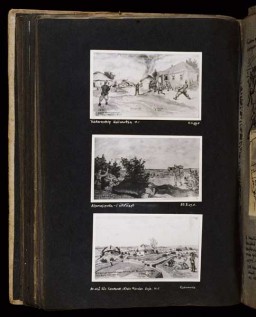
-
Adolf Hitler greets Paul von Hindenburg
PhotoRecently appointed as German chancellor, Adolf Hitler greets President Paul von Hindenburg in Potsdam, Germany, on March 21, 1933. This pose was designed to project an image of Hitler as non-threatening to the established order. This particular image is from a popular postcard. The photo also appeared widely in both the German and international press. Hitler appears in civilian dress, bowing in deference to the heavily decorated von Hindenburg. The March 5, 1933, elections had conferred legitimacy on…
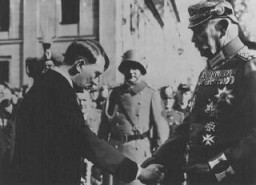
-
Hainichen
ArticleIn 1933, the Nazis established the Hainichen labor camp in Sachsen, Germany. Learn more about the camp, its closing, and the prisoners.
-
Theresienstadt: Other Prisoners
ArticleLearn more about the fate of Jewish prisoners that were deported to Theresienstadt from places other than the Greater German Reich or the Protectorate.
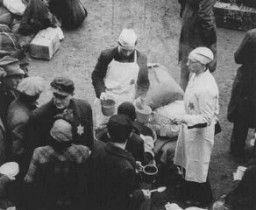
-
Subsequent Nuremberg Proceedings, Case #3: The Justice Case
ArticleThe Justice Case was Case #3 of 12 Subsequent Nuremberg Proceedings against leading German industrialists, military figures, SS perpetrators, and others.
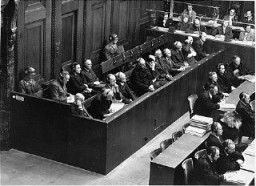
-
Subsequent Nuremberg Proceedings, Case #12: The High Command Case
ArticleThe High Command Case was Case #12 of 12 Subsequent Nuremberg Proceedings against leading German industrialists, military figures, SS perpetrators, and others.
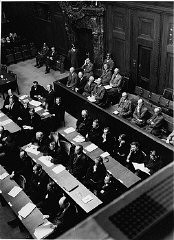
-
Bernard Druskin
ArticleRead the Jewish Partisan Educational Foundation's short biography of Bernard Druskin.
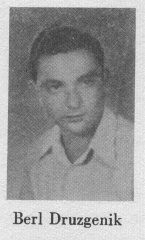
-
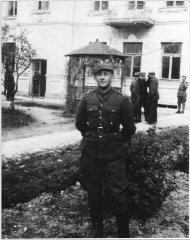
-
Police maintain watch outside the Eldorado nightclub, long frequented by Berlin's gay and lesbian community.
PhotoPolicemen stand outside the shuttered Eldorado nightclub, long frequented by Berlin's gay and lesbian community. The Nazi government quickly closed the establishment down and pasted pro-Nazi election posters on the building. Berlin, Germany, March 5, 1933. Learn more about this photograph.
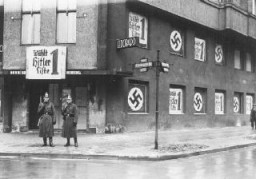
-
The 26th Infantry Division during World War II
ArticleThe 26th Infantry Division participated in major WWII campaigns and is recognized for liberating the Gusen subcamp of Mauthausen in 1945.
-
Röhm Purge
ArticleThe Röhm Purge (the “Night of the Long Knives") was the murder of the leadership of the SA (Storm Troopers), the Nazi paramilitary formation led by Ernst Röhm. Learn more.
-
Antisemitic Legislation 1933–1939
ArticleHundreds of laws, decrees, guidelines, and regulations increasingly restricted the civil and human rights of Jews in Germany from 1933-39. Learn more.
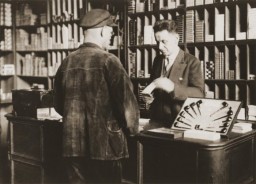
-
World War II in Europe
ArticleGermany started World War II in Europe on September 1, 1939, by invading Poland. War would continue until 1945. Learn more about WWII and genocide in Europe.
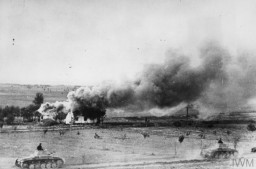
-
Law on the Head of State of the German Reich
ArticleThe Law on the Head of State of the German Reich was the last step in destroying democracy in interwar Germany and making Adolf Hitler a dictator. Learn more.
-
Nuremberg Trials
ArticleTrials of top surviving German leaders for Nazi Germany’s crimes began in Nuremberg after World War II. Read about the Nuremberg trials.
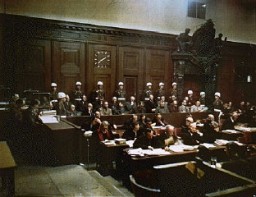
-
1939: Key Dates
ArticleExplore a timeline of key events during 1939 in the history of Nazi Germany, World War II, and the Holocaust.
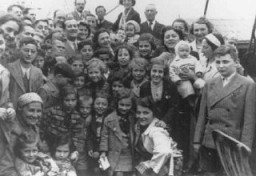
-
Jewish Population of Europe in 1933: Population Data by Country - Photographs
Media EssayApproximately 9.5 million Jews lived in Europe in 1933, the year Hitler came to power. This number represented 1.7% of Europe's total population and more than 60 percent of the world's Jewish population. By 1945, most European Jews—2 out of every...
-
Gertruda Nowak: Maps
Media EssayGertruda Nowak was born to a Roman Catholic family in Poland. The Germans invaded her country on September 1, 1939. Gertruda's father was later accused of working for the Polish underground and taken away. The Germans then came for the rest of the...
-
World War II in the Pacific - Artifacts/Documents
Media EssayOn December 7, 1941, Japan launched an attack on the American navel base at Pearl Harbor. The following day, the United States declared war on Japan, entering into World War II.
-
World War II in the Pacific - Historical Film Footage
Media EssayOn December 7, 1941, Japan launched an attack on the American navel base at Pearl Harbor. The following day, the United States declared war on Japan, entering into World War II.World War II in the Pacific ended when Japan surrendered on Sep...
-
Postwar testimony of Rudolf Höss
ArtifactA page from the transcript of the testimony given by Rudolf Höss at the International Military Tribunal at Nuremberg. At the trial, Höss testified about the gassing of Jews of Auschwitz, where he was commandant. He responded in German and communicated through a translator. Testimony dated April 2, 1946.
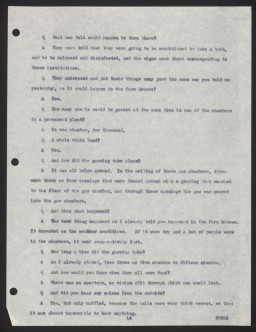
-
Milk can used to store content of the Oneg Shabbat archives
ArtifactOne of the milk cans used by Warsaw ghetto historian Emanuel Ringelblum to store and preserve the secret "Oneg Shabbat" ghetto archives.This milk can, identified as no. 2, was unearthed at 58 Nowolipki Street in Warsaw on December 1, 1950.
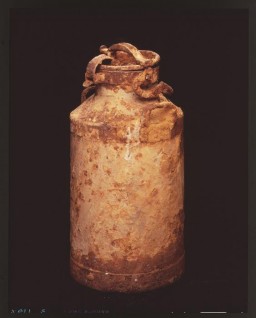
-
82nd Airborne Division
Media EssayThe 82nd Airborne Division is recognized as one of the 36 liberating units of the US Army during World War II. On May 2, 1945, troops of the 82nd Airborne and the 8th Infantry Division overran Wöbbelin, a subcamp of t...
-
Jewish Population of Europe
Media EssayApproximately 9.5 million Jews lived in Europe in 1933, the year Hitler came to power. This number represented 1.7% of Europe's total population and more than 60 percent of the world's Jewish population. By 1945, most European Jews—2 out of every 3—...
-
Pacific Theater
Media EssayOn December 7, 1941, Japan launched an attack on the American navel base at Pearl Harbor. The following day, the United States declared war on Japan, entering into World War II. World War II in the Pacific ended when Japan surrendered on Sep...
-
Courtroom Sketch of Elie Wiesel at the Trial of Klaus Barbie
ArtifactCourtroom sketch by artist David Rose of Nobel laureate and Holocaust survivor Elie Wiesel on the witness stand at the trial of Klaus Barbie. During his testimony, Wiesel stated that "The killer kills twice. First, by killing, and then by trying to wipe out the traces." June 2, 1987.
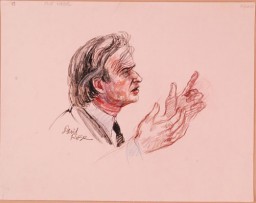
-
Portrait of Vida Kalderon
PhotoPortrait of Vida Kalderon, wife of Yakov Kalderon. She lived at Orisarska 2 in Bitola. This photograph was one of the individual and family portraits of members of the Jewish community of Bitola, Macedonia, used by Bulgarian occupation authorities to register the Jewish population prior to its deportation in March 1943.
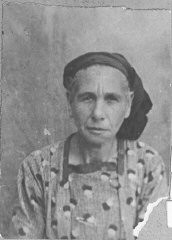
-
US runner Jesse Owens racing the 200 meters
PhotoDuring the 1936 Olympics in Berlin, US runner Jesse Owens begins the 200-meter race in which he established a new Olympic record of 20.7 seconds. Berlin, Germany, August 2, 1936.
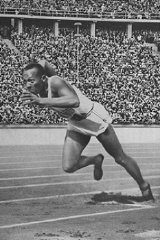
-
Survivors pose for a US Signal Corps photographer
PhotoFive Jewish survivors pose for a US Signal Corps photographer in front of Block 2 in the Hanover-Ahlem camp, a subcamp of Neuengamme. Hanover-Ahlem, Germany, April 11, 1945.
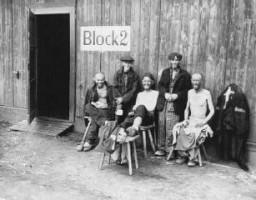
-
US and Soviet troops meet near Linz, Austria
PhotoMembers of the US 9th Armored Division meet up with Soviet units near Linz, Austria. This photograph was taken by US Army Signal Corps photographer Arnold E. Samuelson. Austria, May 2, 1945.
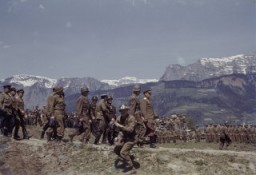
-
US and Soviet forces meet near Linz, Austria
PhotoMembers of the US 9th Armored Division meet up with Soviet units near Linz, Austria. This photograph was taken by US Army Signal Corps photographer Arnold E. Samuelson. Austria, May 2, 1945.
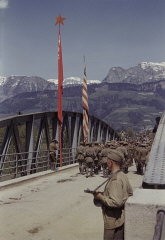
-
The main gate of the Wöbbelin concentration camp
PhotoThe main gate of the Wöbbelin concentration camp. On May 2, 1945, the 8th Infantry Division and the 82nd Airborne Division encountered the Wöbbelin concentration camp. Photograph taken upon the liberation of the camp by US forces. Germany, May 4, 1945.
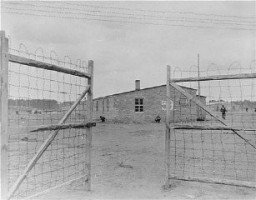
-
A photographer testifies during the Eichmann trial
PhotoHenryk Ross testifies during Adolf Eichmann's trial. In addition to official duties as a photographer in the Department of Statistics in the Lodz ghetto, Ross secretly photographed scenes in the ghetto. To Ross' right is chief prosecutor Gideon Hausner, who holds some of Ross' photographs submitted as evidence. Jerusalem, Israel, May 2, 1961.
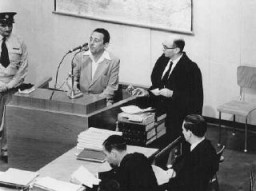
-
German troops marching into the Sudetenland stop at a former Czech frontier post
PhotoGerman troops marching into the Sudetenland stop at a former Czech frontier post. Nazi officials and Sudeten Germans salute the troops. The sign between the swastikas reads: "One People, One Reich, One Führer." Grottau, Czechoslovakia, October 2 or 3, 1938.
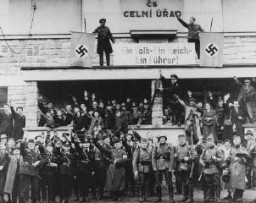
-
Abraham Lewenson testifies
PhotoAbraham Lewenson testifying at the trial of Adolf Eichmann. Jerusalem, Israel, June 2, 1961. The Eichmann trial created international interest, bringing Nazi atrocities to the forefront of world news. Testimonies of Holocaust survivors generated interest in Jewish resistance. The trial prompted a new openness in Israel as the country confronted this traumatic chapter.

-
Jewish refugee children from Children's Transport (Kindertransport) arrive in the United Kingdom
PhotoJewish refugee children, part of a Children's Transport (Kindertransport) from Germany, soon after arriving in Harwich. Great Britain, December 2, 1938.
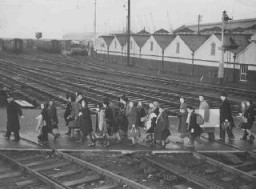
-
Jewish refugee children from Germany soon after arrival in the United Kingdom
PhotoJewish refugee children from Germany—part of a Children's Transport (Kindertransport)—at the holiday camp at Dovercourt Bay, near Harwich, shortly after their arrival in England. Dovercourt Bay, Great Britain, after December 2, 1938.

-
Liberated inmates of Dora-Mittelbau
PhotoLiberated inmates of the Dora-Mittelbau concentration camp, located near Nordhausen, view an area where camouflaged V-1 and V-2 rocket parts were stored. Germany, after April 11, 1945.
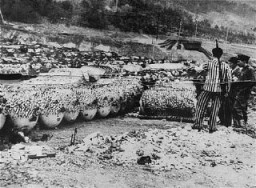
-
US delegation views an underground factory at Dora-Mittelbau
PhotoMembers of a US congressional committee investigating German atrocities view a V-2 rocket on the assembly line of an underground factory at the Dora-Mittelbau concentration camp, near Nordhausen. Germany, May 1, 1945.

-
Nazi Storm Troopers (SA) block the entrance to a trade union building
PhotoNazi Storm Troopers (SA) block the entrance to a trade union building that they have occupied. SA detachments occupied union offices nationwide, forcing the dissolution of the unions. Berlin, Germany, May 2, 1933.
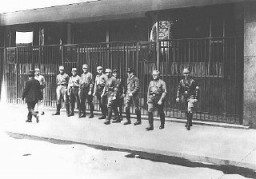
-
Henry Morgenthau, Jr., greets Jewish refugees en route from Shanghai to Israel
PhotoHenry Morgenthau, Jr., treasury secretary in the Roosevelt administration and later chairman of the United Jewish Appeal, greets Jewish refugees en route from Shanghai to Israel. New York, United States, March 2, 1949.

-
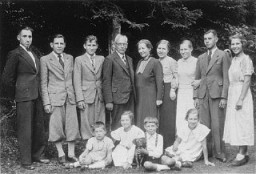
-
Operation "Harvest Festival"
ArticleLearn about Operation “Harvest Festival” (Aktion “Erntefest”), the Nazi attack against the remaining Jews of the Lublin District of the General Government.
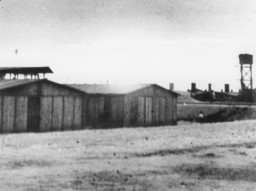
-
Law against the Founding of New Parties
ArticleThe Law against the Founding of New Parties proclaimed the Nazi Party as the only political party in Germany, which became a one-party dictatorship led by the Nazis.
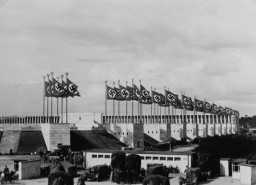
-
Jewish Uprisings in Camps
ArticleLearn more about Jewish prisoners and the various uprisings and armed resistance movements in killing centers and other Nazi camps.
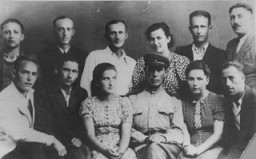
-
Gassing Operations Begin at Treblinka
Timeline EventJuly 23, 1942. On this date, gassing operations began at the Treblinka killing center.
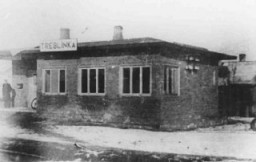
-
Paul von Hindenburg, 1917
PhotoField Marshal Paul von Hindenburg walks along a flower-covered path on his 70th birthday. On either side, crowds of children cheer. October 2, 1917. Hindenburg will later be elected president of Germany in 1925, during the Weimar Republic. © IWM Q 23976

-
The Armia Krajowa during the Warsaw uprising
PhotoMembers of the Zoska battalion of the Armia Krajowa stand atop a German tank captured during the 1944 Warsaw uprising. The tank was used by the battalion during its capture of the Gesiowka concentration camp. Warsaw, August 2, 1944.
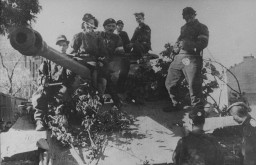
-
Female Soldiers of the Polish Home Army
PhotoSoldiers of the Polish Home Army Women's Auxiliary Services, taken captive by the Germans in October 1944 as a result of the Warsaw Polish uprising. After the uprising ended on October 2, the Germans took as prisoners of war more than 11,000 soldiers of the Polish Home Army.
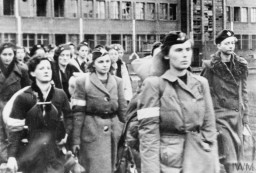
-
The 10th Armored Division during World War II
ArticleThe 10th Armored Division participated in major WWII campaigns and is recognized for liberating a subcamp of Dachau in 1945.
